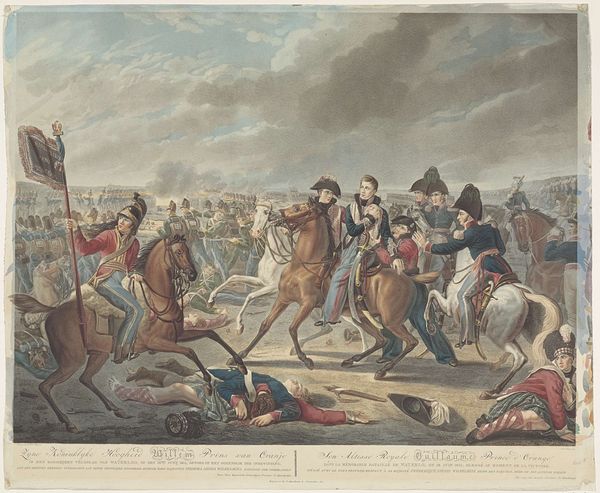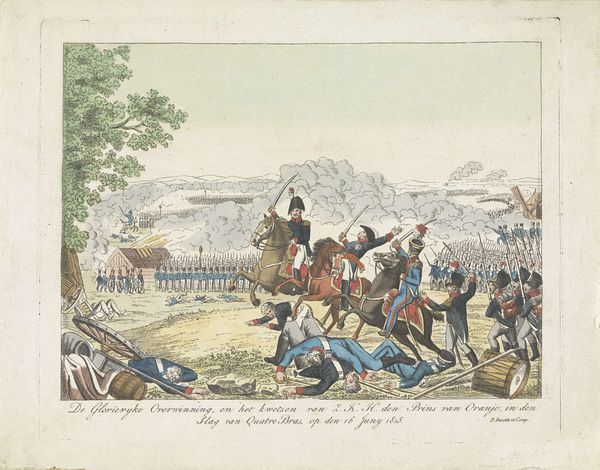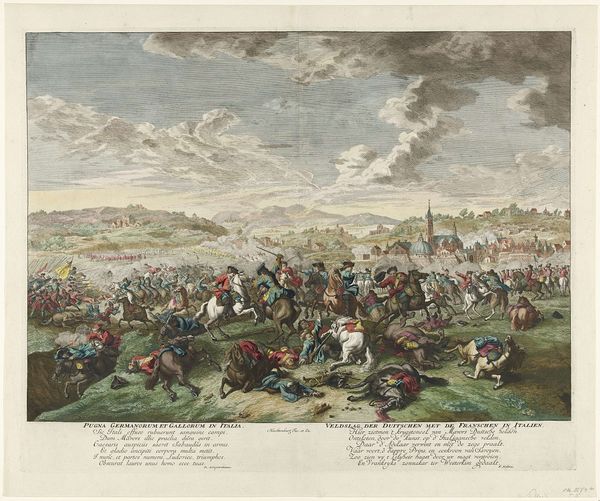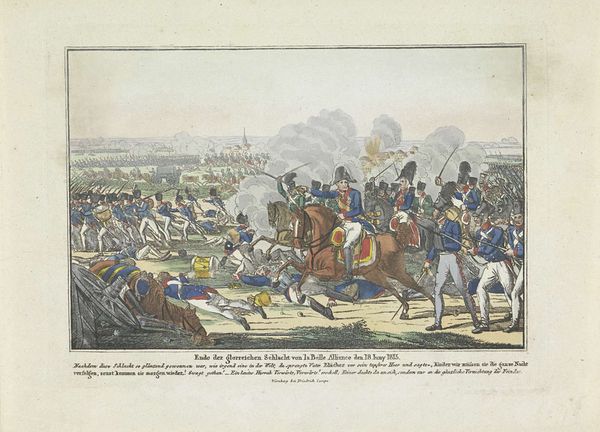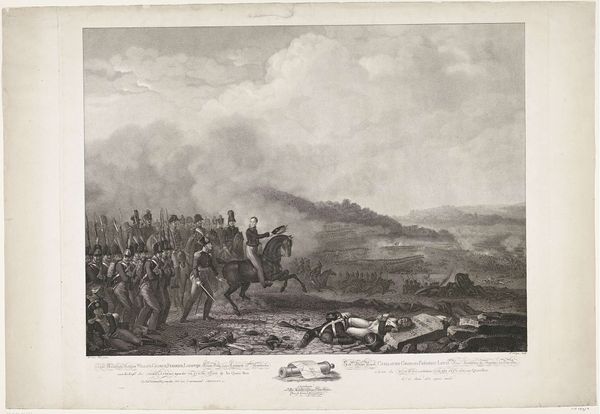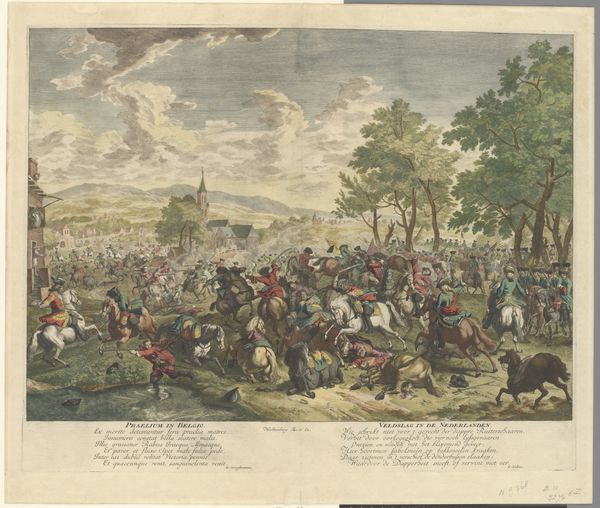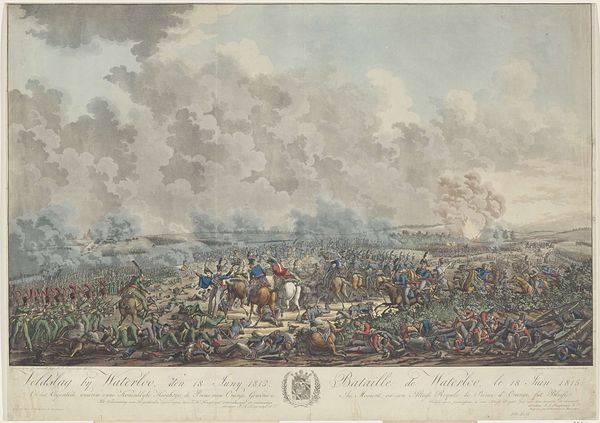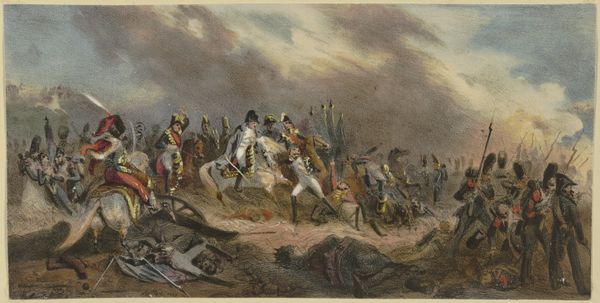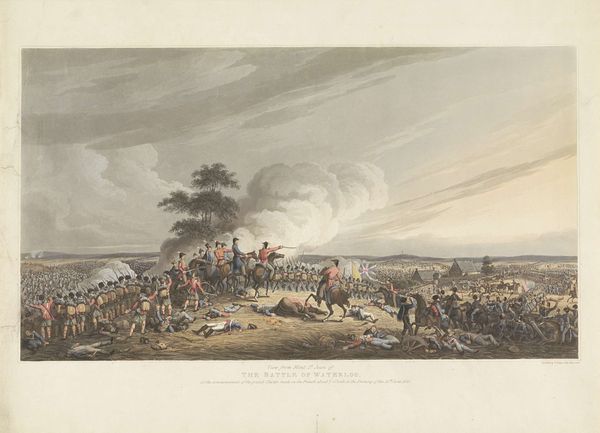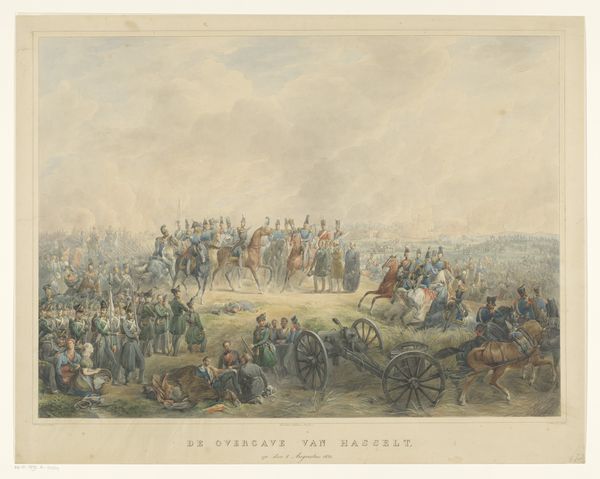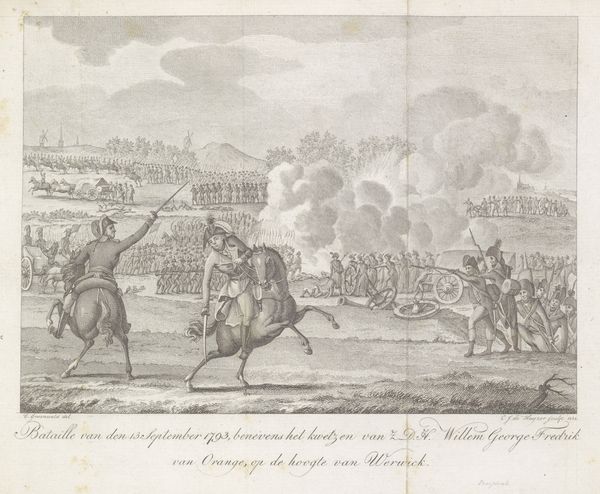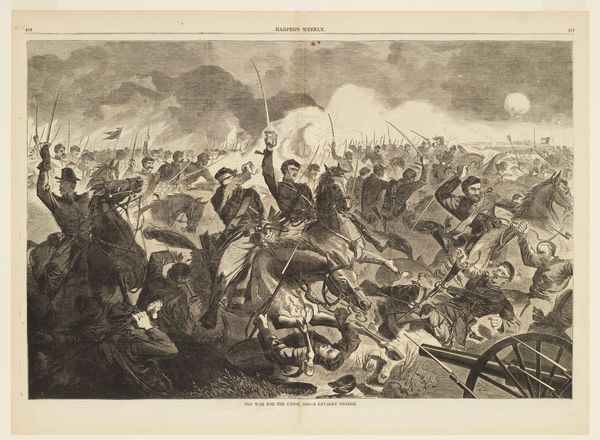
Prins van Oranje leidt de Nederlandse troepen bij Quatre-Bras, 1815 1815
0:00
0:00
plein-air, watercolor
#
plein-air
#
landscape
#
figuration
#
watercolor
#
coloured pencil
#
romanticism
#
watercolour illustration
#
genre-painting
#
history-painting
#
watercolor
Dimensions: height 435 mm, width 558 mm
Copyright: Rijks Museum: Open Domain
Curator: Here we have "Prins van Oranje leidt de Nederlandse troepen bij Quatre-Bras, 1815," made in 1815. Editor: Whoa. Okay, first impression? Kind of… bleak. But beautiful bleak, like a watercolor dream of battlefield angst. It's Romantic, right? Lots of drama in that sky. Curator: It’s an anonymous work housed at the Rijksmuseum, likely a study done in watercolor and perhaps colored pencil, and certainly carries Romantic elements. Looking closer, the way the landscape almost bleeds into the figures emphasizes the historical weight bearing down on the individuals. It's not just a battle scene; it's a commentary on leadership and sacrifice. Editor: Sacrifice for sure! Look at all those tiny soldiers… marching, falling. And that Prince – he’s just a guy on a horse, right? Must've felt so… vulnerable. The plain-air feel really gets to you. Like you are right there, smelling the gunpowder. The palette seems restricted; mostly blues, browns and grays which perfectly underscores the sombre subject. Curator: The history-painting aspect cannot be overlooked, the way history-painting functioned to create cultural myths. How can it also perpetuate particular, potentially skewed or romanticized, notions about Dutch heroism and Orange power? Editor: True! But those dramatic clouds! I can’t stop looking at them. This painter, whoever he or she was, had serious emotional range, even if they had a commission in mind. I'm seeing the battle, but also the psychological landscape, the fear and doubt. Is that even genre-painting at all? Curator: Perhaps the watercolor illustration transcends the genre through sheer emotional intensity. Its political implications can't be dismissed. What stories and ideas is this battle representing for its commissioners, viewers at the time, and the audience here and now? Editor: Makes you think. Art as propaganda or genuine… lament? Maybe both? I’m not so sure about what side the artist took… but, hey, art makes ya ask those messy questions! Curator: Exactly. The piece’s ambiguous positioning—the interplay between propaganda and emotion—proves to be quite poignant. Editor: It certainly leaves a mark… thanks for walking me through all of that!
Comments
No comments
Be the first to comment and join the conversation on the ultimate creative platform.
